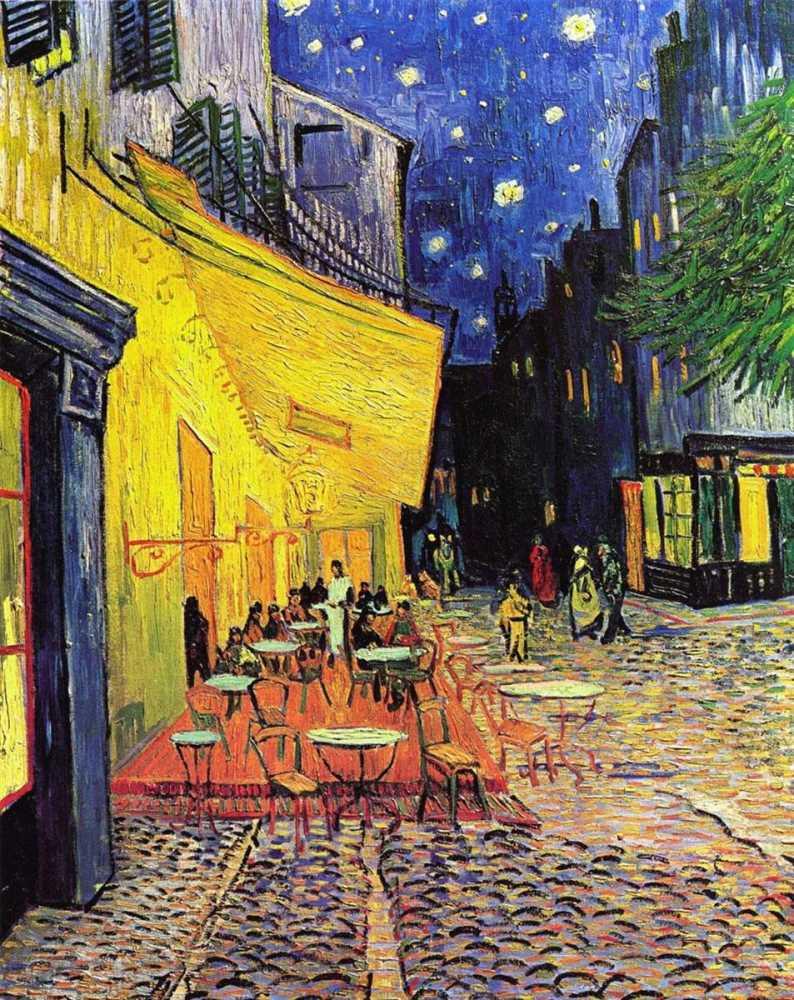A summer evening in the city with Vincent Van Gogh

The starry vault, the roofs, the streets and an evening walk in the heart of the city. A table, two, four, ten of a terrace that fades in the distance, with customers, yes, but far away, as is far away the buzz of their voices. Standing, in the white patch of his apron, intent on taking orders, is the waiter, who even tonight seems to show his customers his usual feigned interest.
They are all sheltered under a huge awning drawn by a history of infinite drinks. Yellow prevails over everything, and a bit of green, like the wall, and its reflection reaches the cobblestones of the road, along which further down there is another place, near the tree's fronds, and the series of illuminated windows that trail off in the darkness.
Here, where the cobblestones are tinged black and a glass door protected by solid classical contours disappears behind the frame, Van Gogh uses the colours of an eccentric palette to depict the night of his beloved Arles.
He likes Café Le soir, which is well known and he often passes in front of it when he takes his walks. He has often thought that he would paint it, to tell what happens there through the eyes of painting, and so here he is tracing out the initial sketches. Usually painters sketch their paintings in the morning, when the light of the rising sun brings out the shapes of this world. In contrast, Van Gogh preferred the evening, when the sun has set and the shapes blend with their shadows, in a mishmash that creates ambiance. In these moments the senses are awakened by darkness: aromas, noises, tactile perceptions, feelings.
Dream of a midsummer's night, nocturnal daydream, a reverie that pleasantly deforms the vision, this is what Van Gogh seems to have found in the out-of-sight position from where he sketched on his canvas. In fact the café terrace stretches out into the distance in a surrealistic way, almost tearing through the canvas, and it is yellow, extremely yellow, reddish, and even green, like absinthe, while in the background silhouettes, shadows and darkness are arrayed beneath a flourishing sky of rough stars.
The fact is that Van Gogh is not so interested in documenting the actual colour, it is more important to contrast the sense of warmth of the place and the coldness - mitigated by the tree and the street - of the deep city that disappears beneath the sky. Why? Perhaps only in this manner he can convey the vibration of pleasure and mysterious calm that passes through it at this time.
Not a realistic effort, then, if not to the extent that with colour and shape Van Gogh can tell the truth of a world that is always somehow interior. Like many of his colleagues, of course he also travels and participates in the worldly life, but then retires shortly afterwards and expresses his own, singular, very personal point of view, somewhere between dream and reality.
Vincent Van Gogh, The Café Terrace on the Place du Forum, 1888, oil on canvas 81×65.5 cm, Museo Kröller-Müller, Otterlo.
